Goals and constraints
We were engaged to restore profitable growth for a premium forged wheels manufacturer in the US. The client required a minimum ROAS of 6.0 on priority brands, with budget expansion only after returns were durable. We started with a strict cap and clear commercial thresholds.
Introduction
Premium forged wheels is a high-consideration, high-AOV category where relevance, timing, and product-market fit drive performance. The client - a Texas-based manufacturer selling nationwide - approached us after Meta underperformed and their Google Ads ROAS declined from 8 to 3 within months. They also observed unexplained traffic spikes with ultra-short sessions and no sales. Our mandate was simple: stop the waste, stabilize performance at ROAS 6+, and grow profitably.

Before we started: baseline performance snapshot from Google Ads showing the account's starting point used for diagnosis and goal setting.
Client context
The client manufactures premium forged wheels for Tesla, BMW, Rivian, Audi and other marques. The business had operated for one year and had already trialed both Meta and Google Ads with prior agencies. Meta produced no measurable return and was switched off. Google Ads initially performed well but then deteriorated, with ROAS falling from 8 to 3 and a downward trend that would not self-correct.
Performance Max had been used with asset groups grouped by vehicle model. Many asset groups had few or no creative assets, and signals were minimal or missing. While PMax can work out of the box, unmanaged changes to budgets and bidding often trigger retraining and push the system toward cheaper, low-intent clicks. That is exactly what we found.

ROAS dropped as budgets increased - a common outcome of unmanaged changes in automated campaigns. The chart highlights the trend that triggered our intervention.

Unexplained traffic spikes with ultra-short sessions. These anomalies periodically inflated click volume without conversions.
Strategy
We set a clear plan to regain control, restore efficiency, and build a scalable structure.
We also defined a tight feedback loop for data integrity and decisions. We used GA4, Google Ads reporting, Google Trends, Ads Transparency, Keyword Planner, Optmyzr for automation and reporting, and SE Ranking. We linked a Looker Studio dashboard for client transparency and executive alignment.
Data source and dashboards: Looker Studio report. Engagement brief and project folder for reference: Project brief, Project folder.

Geo strategy: we started with local vs nationwide separation, then expanded to broader US targeting once campaigns matured.
Execution
We executed in sprints to stabilize quickly, then scaled what worked.
Brand-level PMax segmentation and signals. We built separate PMax campaigns for each marque with full creative stacks and layered signals. We monitored Insights to identify non-performing signals and pruned aggressively. We also applied cross-brand negatives to minimize cannibalization and improved query relevance with shared lists.
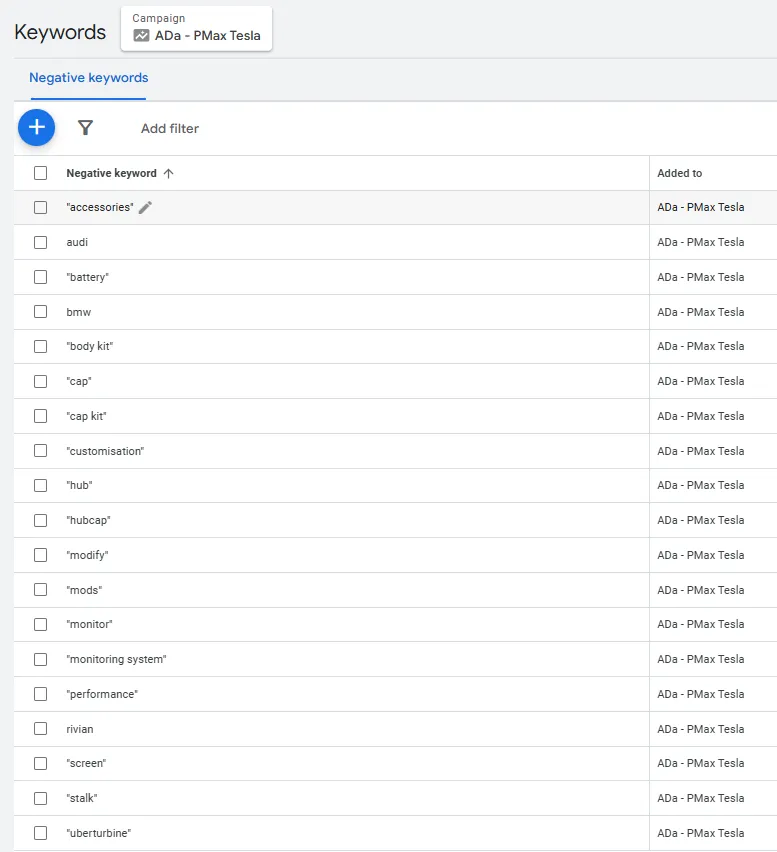
Cross-exclusion and negative keywords: removing competitor brands and irrelevant terms reduced cross-campaign cannibalization.

Additional negatives - excluding overly generic or irrelevant queries like "hubcap" and "used rims" to preserve budget for buyers.
Search for insights only. We deployed tightly matched search campaigns with low-frequency, high-intent queries to discover audiences and validate demand. We ran short experiments with broad match and DSA to test for incremental reach.
DSA experiment underperformed due to site content being highly technical and lacking common terms like "forged wheels" - we recommended adding baseline descriptors to product pages.

Broad match and DSA generated poor results in this niche. We focused the budget back to high-intent PMax and exacting search.
Targeting expansion and TOAS tuning. Expanding targeting and calibrating target ROAS where appropriate unlocked meaningful lift on select brands. In one example, Rivian PMax improved from 390% ROAS to 812% after expansion.

Rivian performance detail: the shift to broader reach plus signal refinements supported sustainable conversion value growth.
Seasonality and budget discipline. We resisted knee-jerk reactions in slow periods and adjusted in measured steps. After testing large budgets to qualify auctions, we returned spend to potential and scaled gradually.
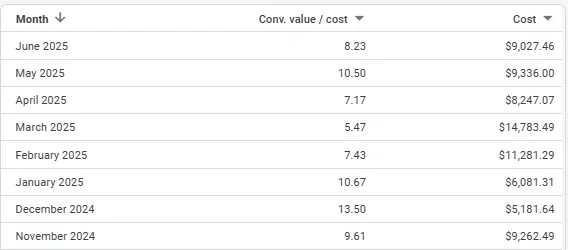
Seasonality in action: softness after New Year and a June dip. Recognizing external demand cycles prevented wasted spend and over-optimization.

Budget caps were used to stabilize ROAS during April-May. Controlled spend preserved efficiency while we refined signals.
New customers-only and Europe tests. We tested a "new customers only" campaign and a quick European market entry. Both underperformed given the product price point, delivery timelines, and limited brand equity outside the US. We shut them down fast to protect ROAS.

"New customers only" did not produce incremental sales in this context and was paused to refocus budget on proven campaigns.
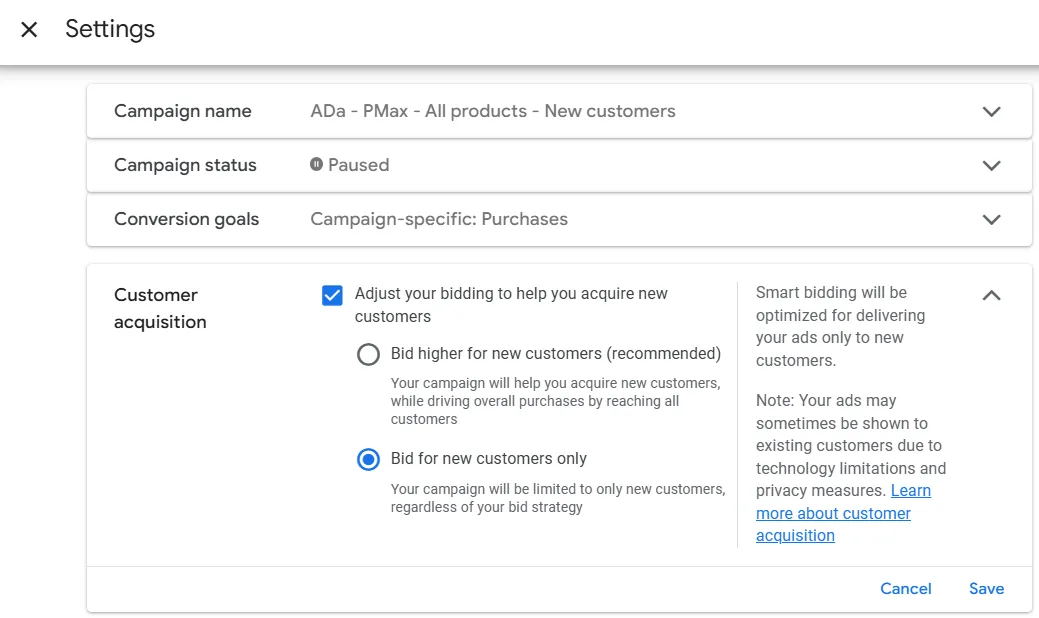
Further view of the new customers experiment: budget spend without ROAS justified shutting the test down quickly.

Europe test underperformed. Similar pricing but slower delivery and low brand recognition limited conversion. We reverted to US focus.
PMax over Search for this vertical. Multi-surface reach, better inventory access, and automation made PMax the primary driver. We retired Search when it failed to prove incrementality.

PMax outperformed search consistently. We prioritized PMax and used search mainly for insights and brand protection when needed.
Competitor brand handling. Initially we excluded competitor brand terms. Testing showed that side-by-side comparisons sometimes helped us win. We removed brand exclusions where they suppressed qualified demand.
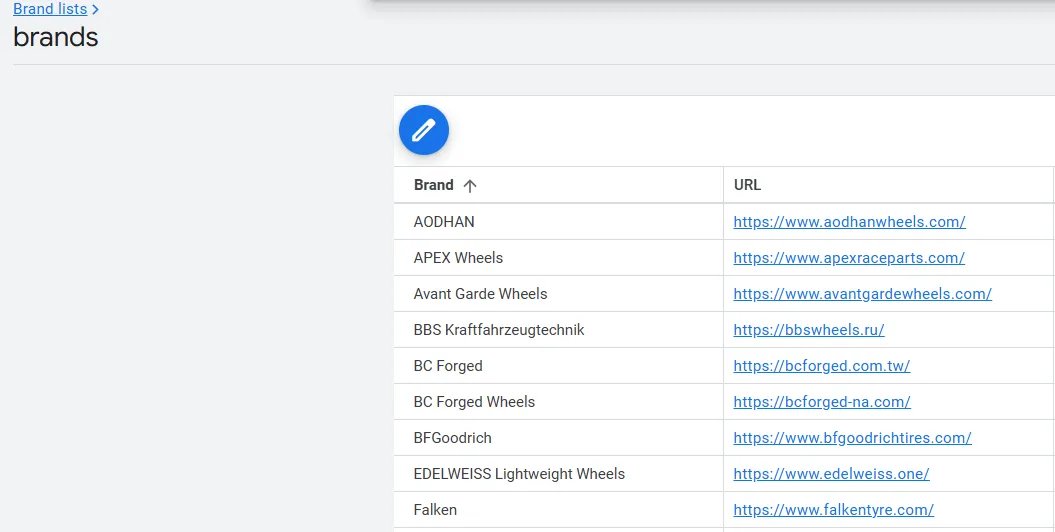
Brand exclusions were relaxed after testing showed that comparison shoppers could be profitable - nuanced control beat blanket exclusions.
Personalization and creative. We connected intent to product specificity and value props. Asset groups showcased model-compatible SKUs and highlighted both technical and emotional benefits.

Creative focusing on technical qualities - strong, light, reliable - aligned to buyer needs for performance and safety.

Creative highlighting emotional value - style and premium feel - to complement performance messaging.

Product images from the feed matched to vehicle model and query intent consistently outperformed generic visuals.
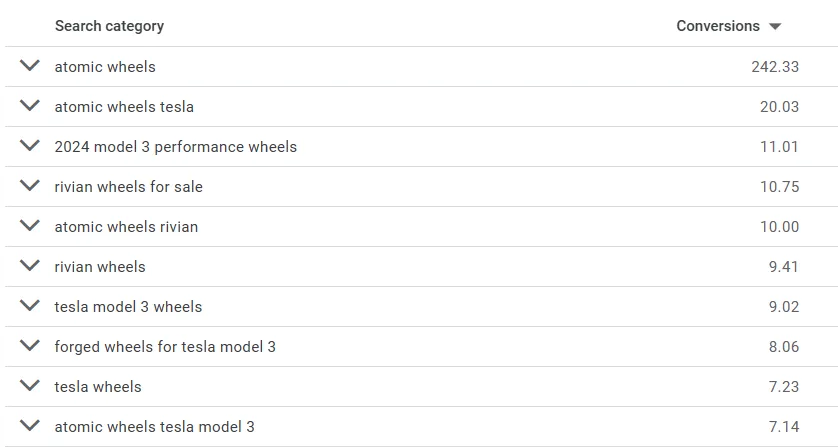
Search topics from PMax Insights informed negatives, asset updates, and signal adjustments to strengthen relevance.
Not every audience tactic worked equally well across brands. For example, targeted audiences performed weaker for BMW and were deprioritized for that marque.
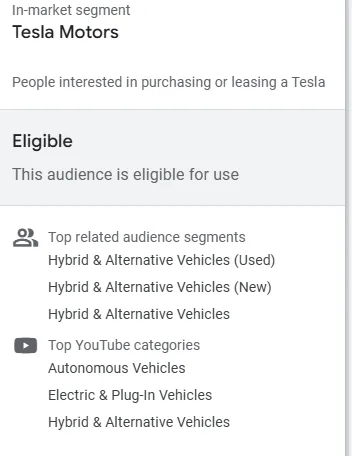
BMW campaign view where targeted audiences delivered weaker results, guiding brand-specific adjustments.
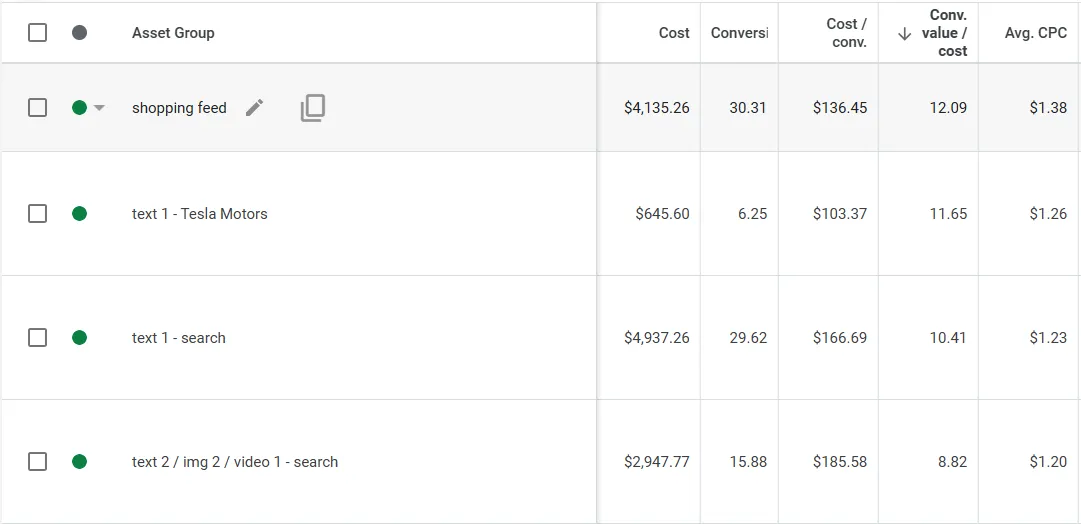
Further BMW detail supporting the decision to dial back certain audience tactics in favor of broader PMax learning.

Trend view confirming that some audience segments did not add lift for BMW and were pruned.
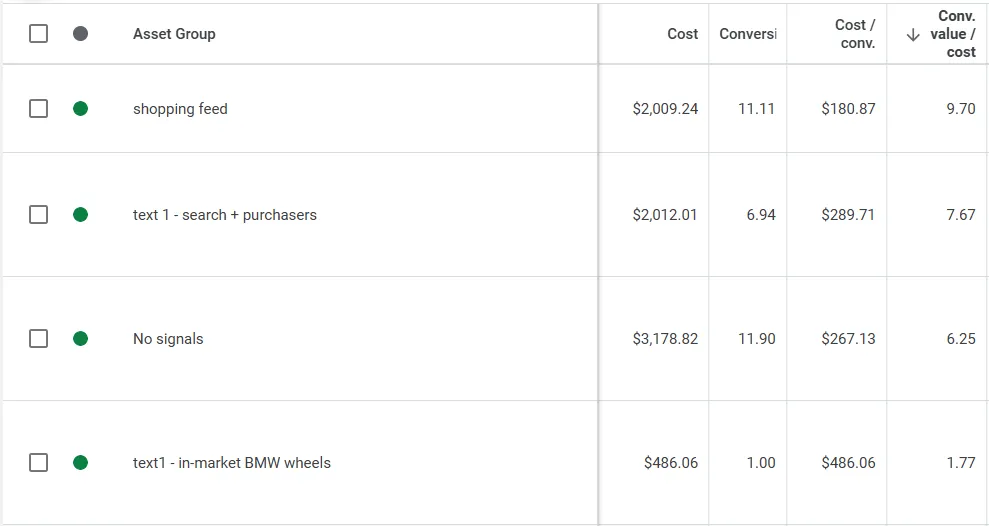
Outcome: simplified signals and cleaner inventory access improved BMW efficiency despite lower audience constraints.
Results
We reversed the decline, exceeded the ROAS target, and scaled profitably. In the last 30 days, ROAS reached 9.01 on $10.7k spend, generating $96,363 revenue. Cost per conversion dropped from $489 to $163. Average CPC was $1.10 on 9,729 clicks, with an AOV of $1,466. The business is now positioned to grow spend with confidence.
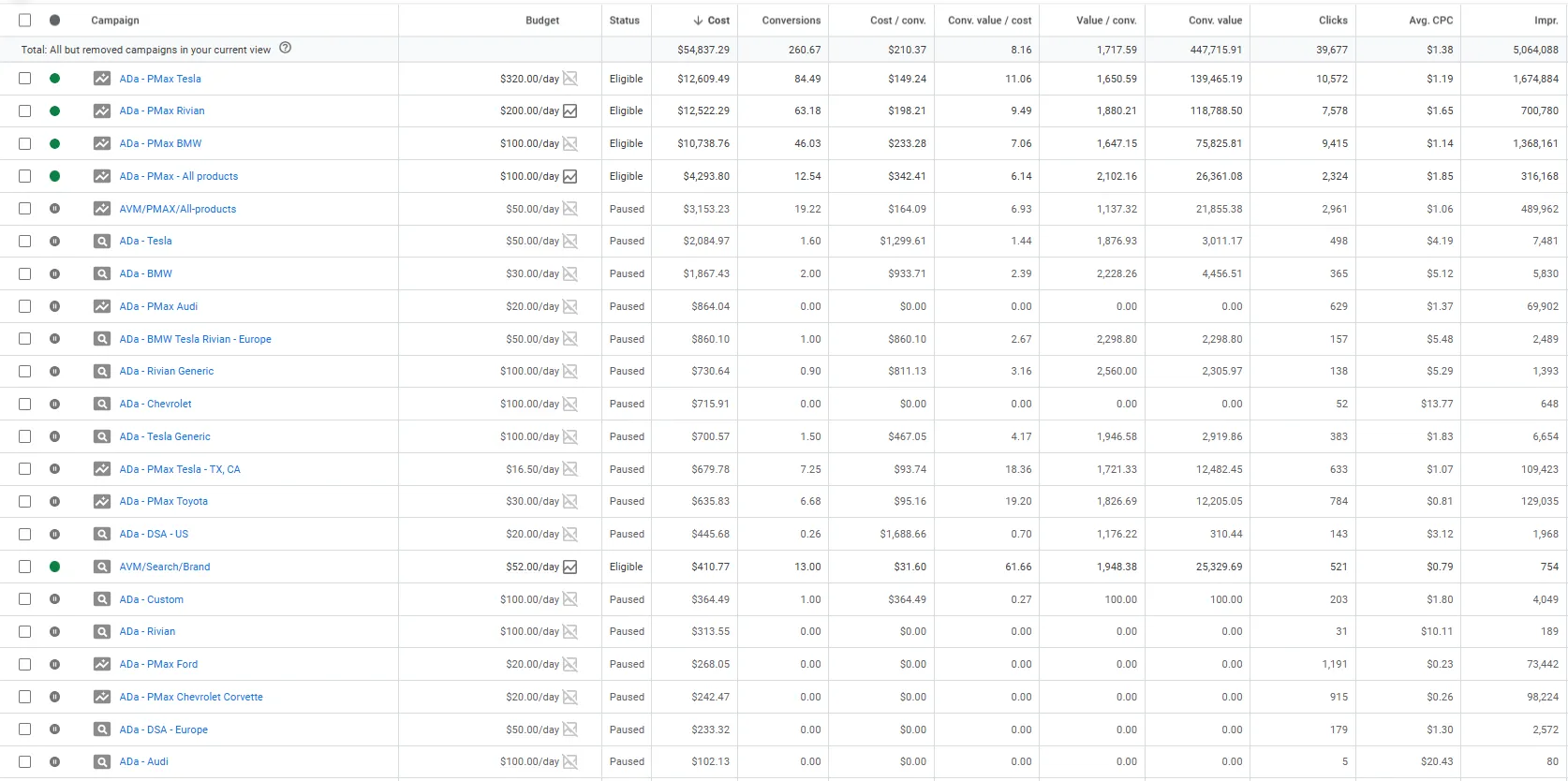
Six-month trajectory: sustained ROAS above goal with disciplined scaling and seasonality-aware budget control.

Revenue-to-ad-spend ratio over a year: clear improvement driven by structure, signals, and negative keyword hygiene.

Last 30 days: ROAS 9.01 on $10.7k cost and $96.4k revenue, with 66 conversions and CPA at $162.80.

Device mix for the last 30 days: device-level performance was used to fine-tune bids and creatives.

Geographic performance by state in the last 30 days: inputs to budget allocation and audience expansion.

Results during competitive surges and seasonal shifts - continuous monitoring enabled fast, data-backed adjustments.
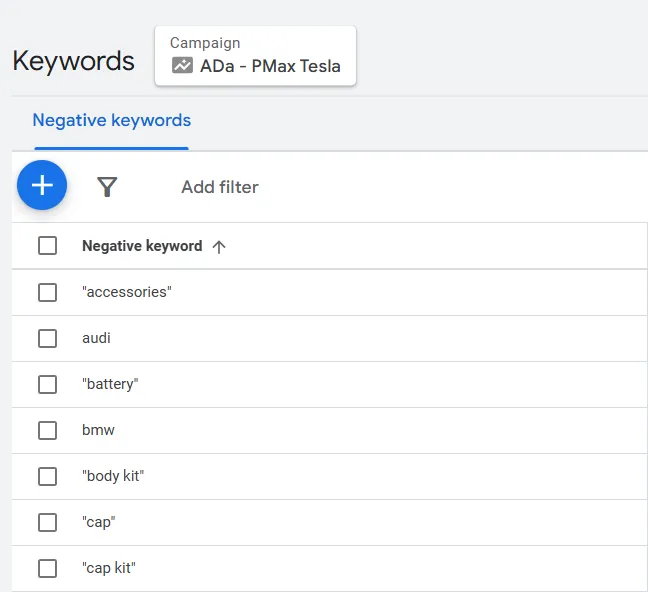
Change log and outcomes around negatives and brand separation that reduced overlap and improved relevance.

Summary view of underperforming experiments (broad match, DSA, new customers). Shutting these quickly preserved ROAS.
What changed and why it worked
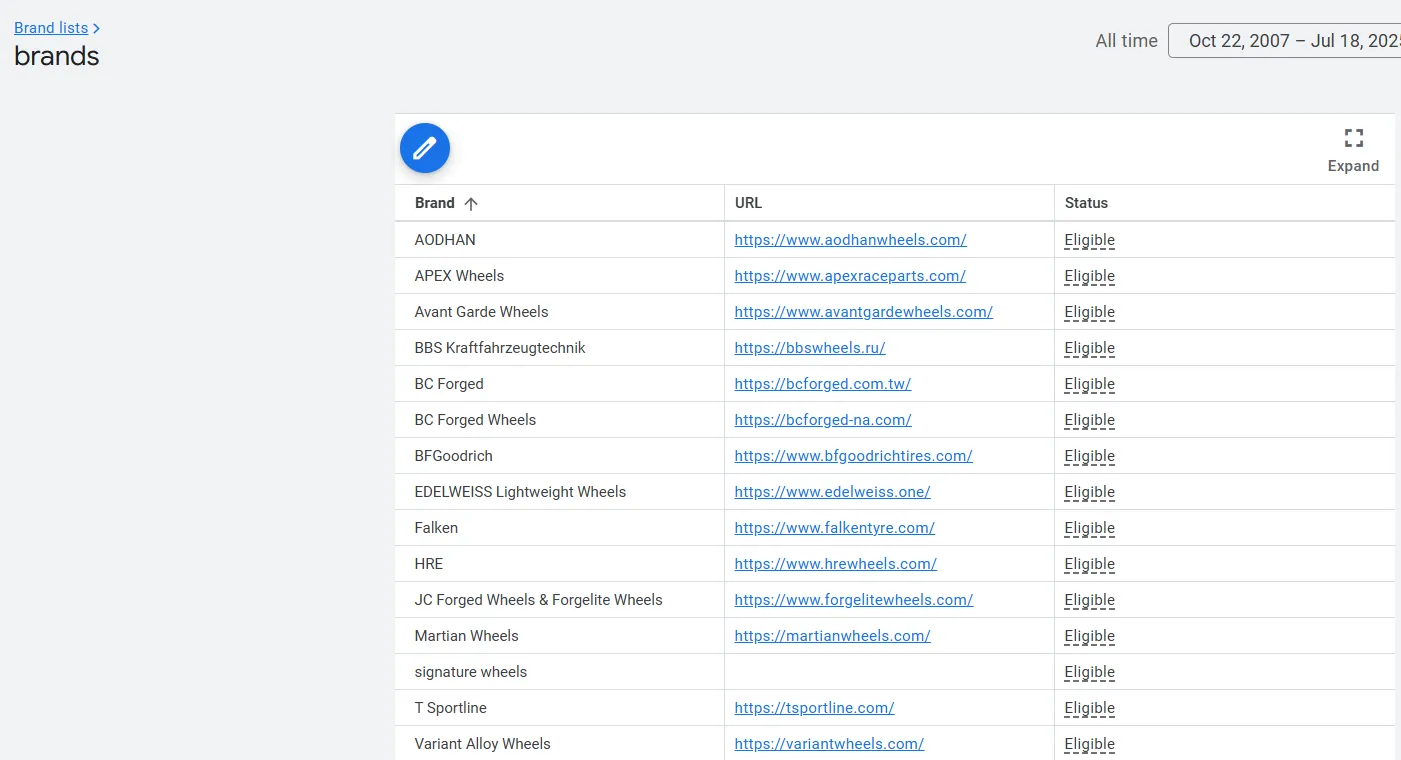
Shared negative lists of competitor brands were managed with nuance - excluding where harmful, allowing where comparison helped.
Lessons and next steps
With ROAS stabilized well above the 6.0 target and CPA reduced by two-thirds, the next step is controlled scale: add budget to the strongest brand PMax campaigns, continue query hygiene, and A/B test creative variants focused on top-converting models and finishes. We will also revisit Europe only after addressing delivery timelines and building brand equity in that region.

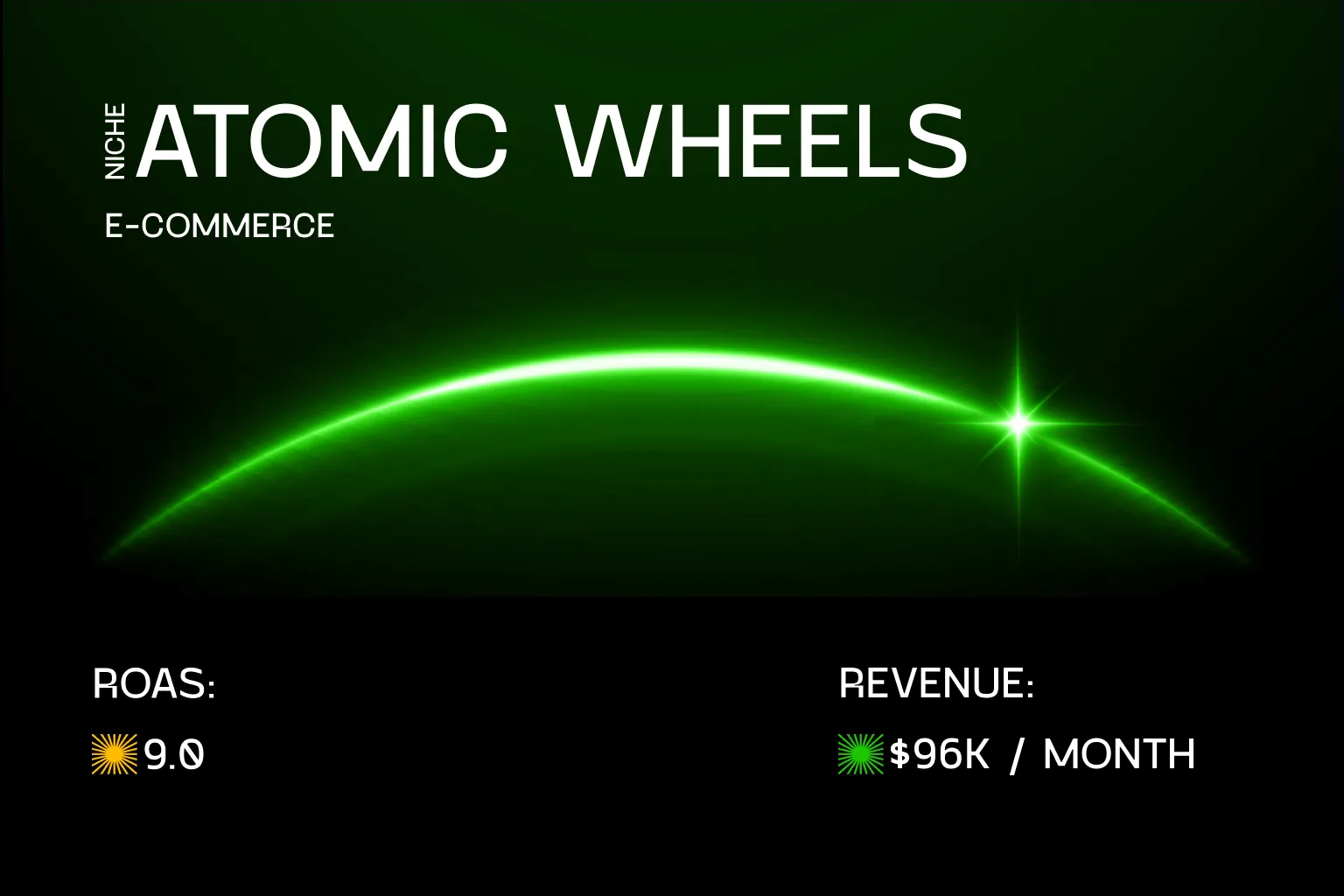

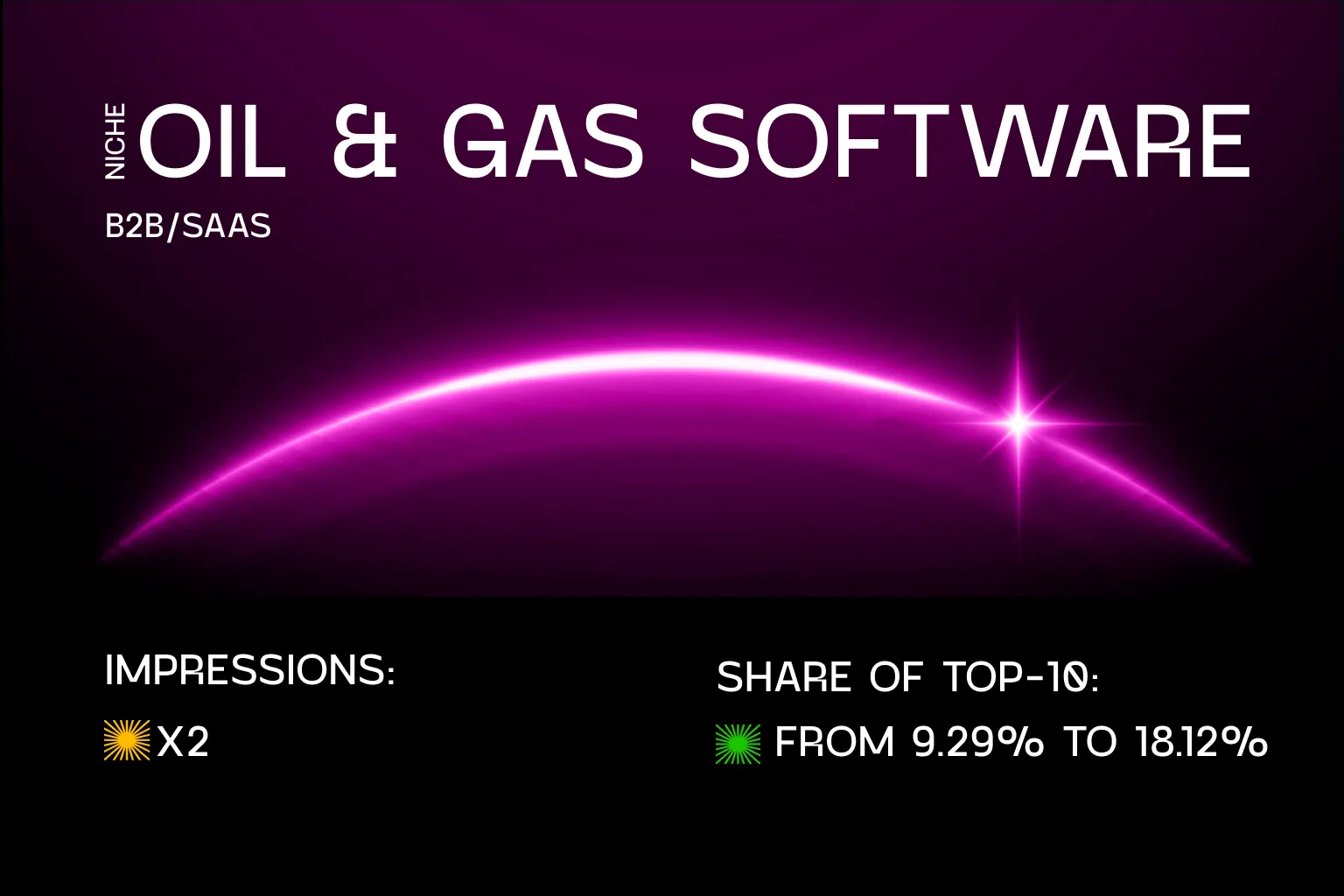
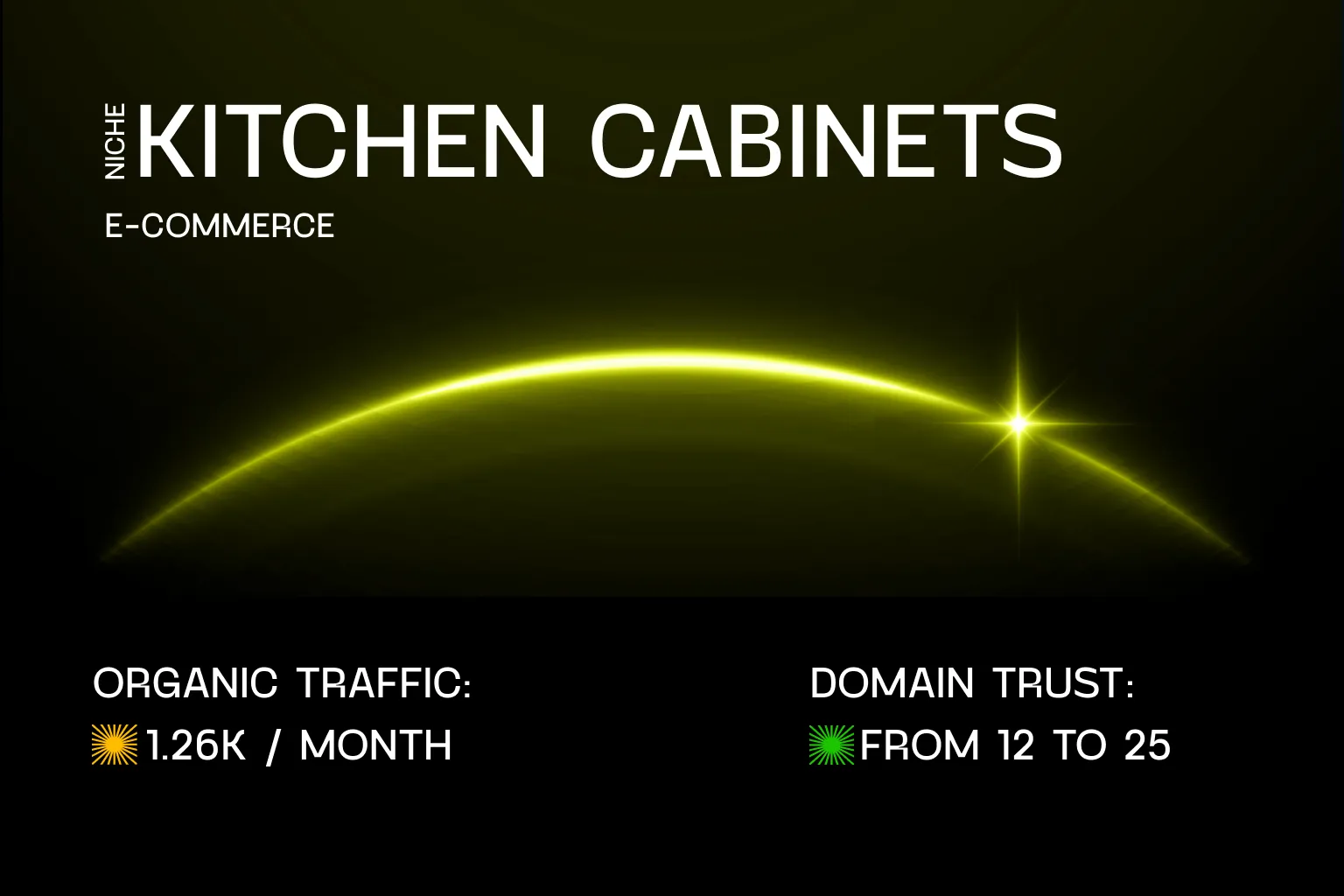
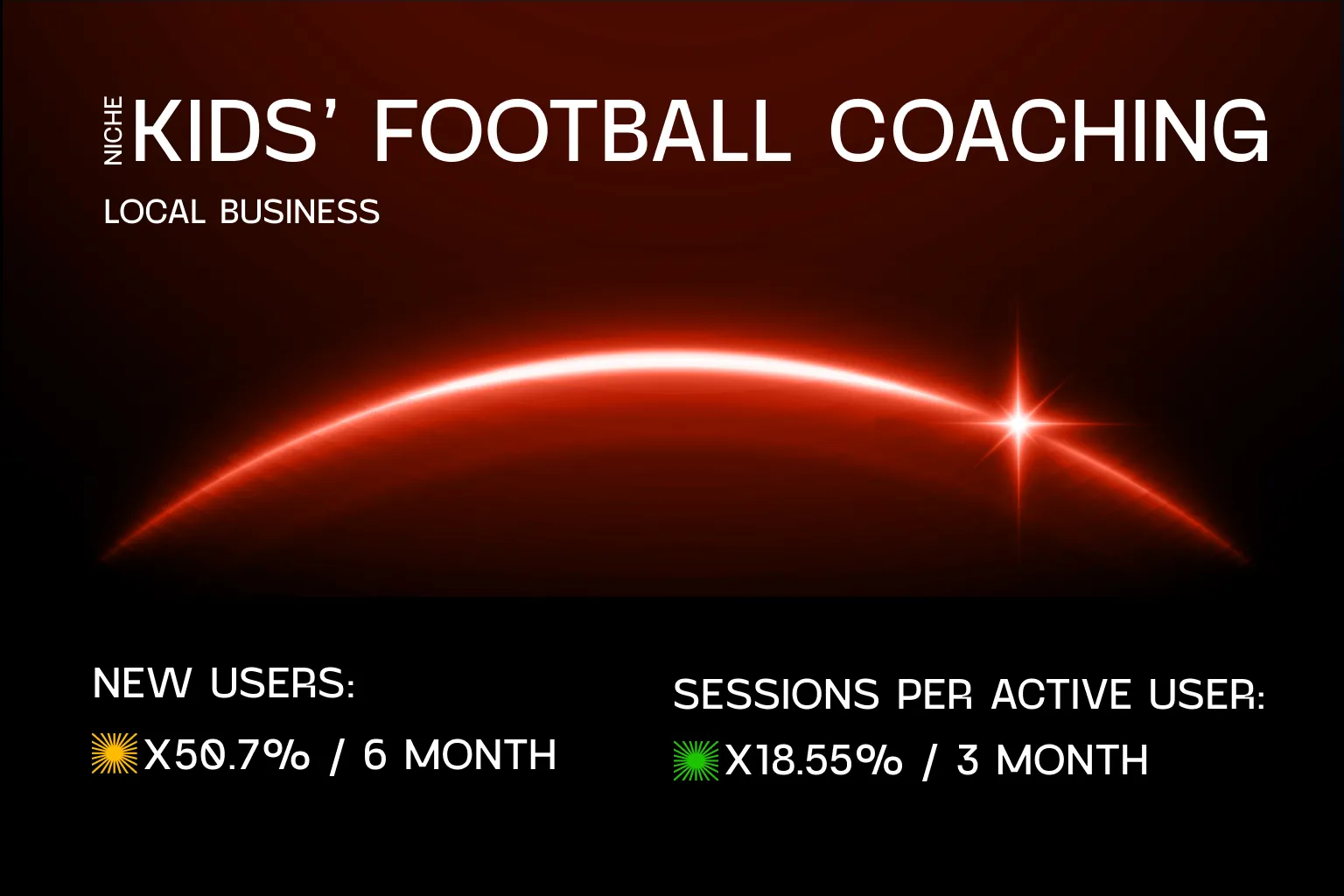
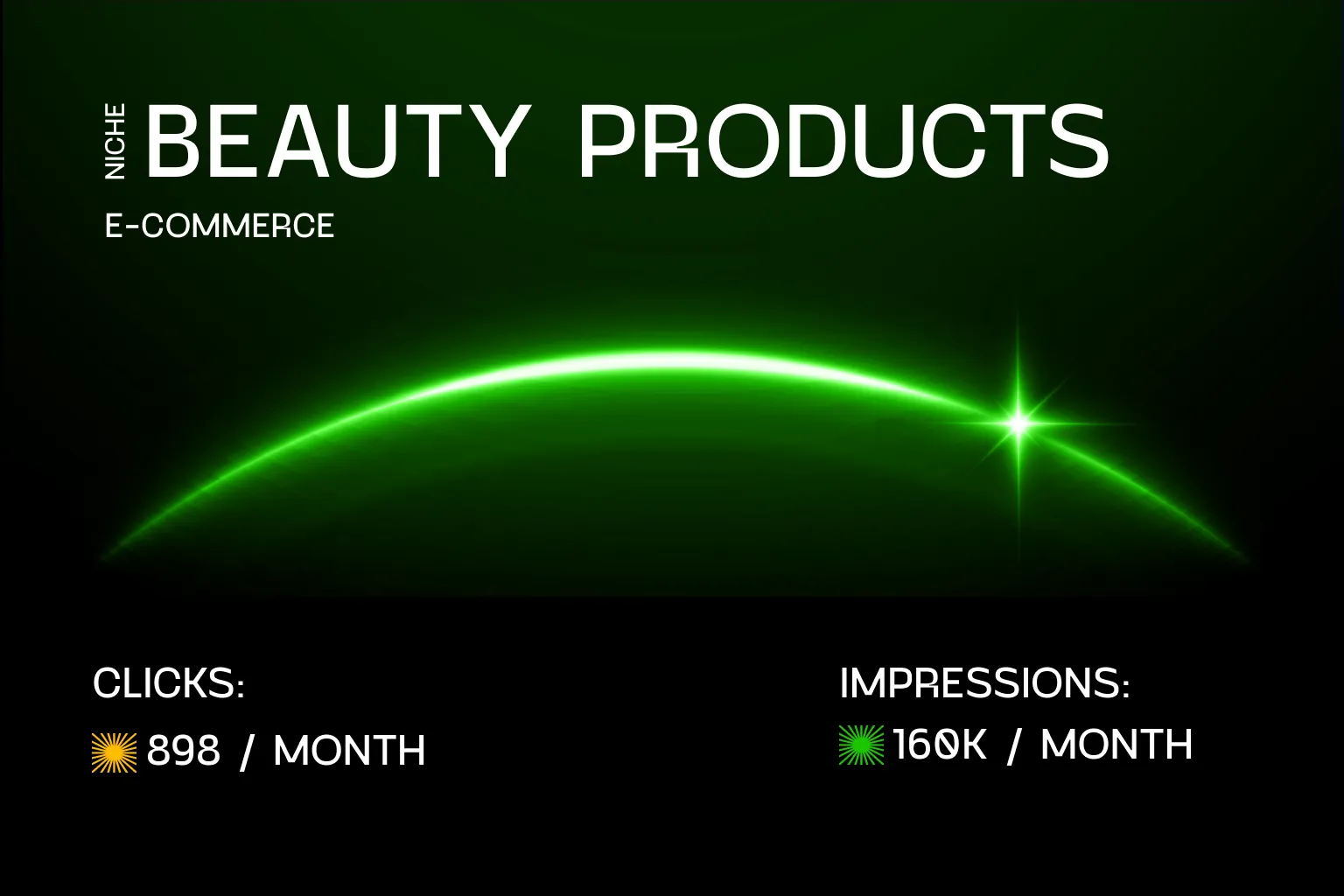
.svg)